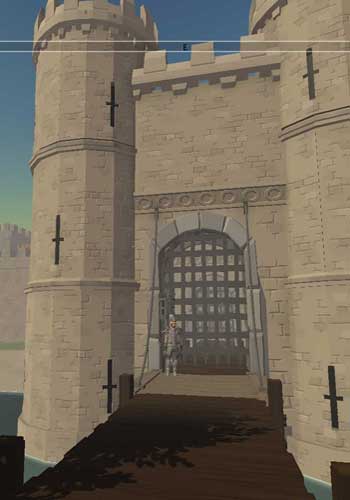Glossary of terms
Abbey: The A monastic community. Abbeys belonged to particular
orders, such as the Cistercians.
Abbot (male): Person in charge of an Abbey.
Abbess (female): Person in charge of an Abbey.
Almery: or Ambry or Aumbry. A box or cupboard for alms, or a cupboard
in the chancel for sacred vessels.
Almonry: The office of the Almoner where alms were distributed.
Benedictine: Order of monks founded by St. Benedict. Followed the
Benedictine Rule.
Canons: The chapter members. The people running the cathedral.
Chapter: The group of canons, with the Dean, who are the governing
body of a cathedral.
Chapter House: The building where the canons and Dean met each day to
hear a chapter of St Benedict's Rule read out and to conduct the business of the
abbey.
Cistercians: Order of monks, also know as the White Monks.
Cloister: The rectangular covered area around an open space (garth)
of a monastery or cathedral surrounded by covered walkways used for study and
meditation. A photograph of the cloister at Lincoln Cathedral.
Minster: Large church originally linked to a monastery.
Monastery: A community were monks or nuns worship God.
Monk: A man who has taken vows and joined a religious community.
The dissolution
 enry VIII obtained much needed money by suppressing hundreds of religious houses across
the country and selling off their lands and assets. The monasteries, abbeys and
nunneries had in the past played an important role in the fabric of medieval life. Not
only had they acted as a place of worship, but they were also a centre for education,
refuge for travellers and provided food for the poor. But times were changing and
education was being provided by newly created universities and inns were providing a
place for travellers. Less people were interested in a monastic life.
enry VIII obtained much needed money by suppressing hundreds of religious houses across
the country and selling off their lands and assets. The monasteries, abbeys and
nunneries had in the past played an important role in the fabric of medieval life. Not
only had they acted as a place of worship, but they were also a centre for education,
refuge for travellers and provided food for the poor. But times were changing and
education was being provided by newly created universities and inns were providing a
place for travellers. Less people were interested in a monastic life.

By an Act of Parliament in 1536 King Henry VIII and Thomas Cromwell sent out surveyors to report on the state of each religious community, starting with the smaller houses first. Those houses that were badly run or where disipline for the religious order they followed had become slack were closed down immediately and their lands and assets taken. The abbots were offered pensions or money to surrender their houses but also threatened with violence if they did not. Several abbots were executed for not surrendering their abbeys.
The inhabitants of the houses were sent to larger abbeys or just abandoned. A second round of suppression followed that concentrated on the larger religious houses. But the suppression did not come without a cost. Several revolts were sparked by the Dissolution of the Monasteries.
In 1539 by another Act, the larger religious houses suffered the same fate.
Court of Augmentations
The Court of Augmentations was created during the reign of Henry VIII and was one of a number of financial courts established during this time. Founded in 1536, its purpose was to administer monastic properties and revenues confiscated by the Crown at the Dissolution of the Monasteries.
Those abbeys that became the property of the Crown were stripped of their assets. The lead from the rooves was melted down on site and shipped off to be reused. The stonework found use in local buildings. Some abbeys were so stripped of their assets that nothing above ground level remained while others had sections of wall remaining.

Cathedrals
The only houses to survive were those that served as seats for bishops. Those that survived include Canterbury, Rochester, Winchester, Ely, Norwich, Worcester, Durham and Carlisle. Several new cathedrals were also created from monasteries such as Gloucester, Chester, Peterborough, Bristol and Oxford.
Explore a medieval abbey













